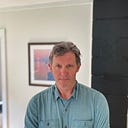Member-only story
The Inca Trail Less Travelled
Approximately five hundred years ago, Machu Picchu was a living city, inhabited by Incas who sustained themselves by farming the vertiginous terraces they had carved out of the mountainside, and by worshipping the gods of mountain and sun.
After the American archaeologist Hiram Bingham stumbled upon the “Lost City” in 1911, one of the many routes the Inca used to connect themselves with other Inca sites gradually became one of the world’s great hikes for the hardy and intrepid. It follows the steep contours of the Andes, passes by multiple Inca forts and ruins, and offers spectacular views of snow-capped mountains and fertile valleys, culminating in one of the world’s most dramatic heritage sites.
Today, however, the hardy and intrepid will likely find their satisfaction upon arrival at the site somewhat diminished, when they are greeted by thousands of tourists who have arrived nonchalantly by bus and train from Cusco for the day. The trekker then, lean and tan from the exertion, finds herself exploring the quasi-mythical ruins alongside hordes of smart-phone-wielding visitors taking selfies with the llamas.
Or possibly worse. In 2014, while Machu Picchu topped Travel Advisor’s list of world destinations, the Peruvian government was angrily clamping down on naked tourists posing for Facebook photos. One couple was videotaped streaking across the main square…
